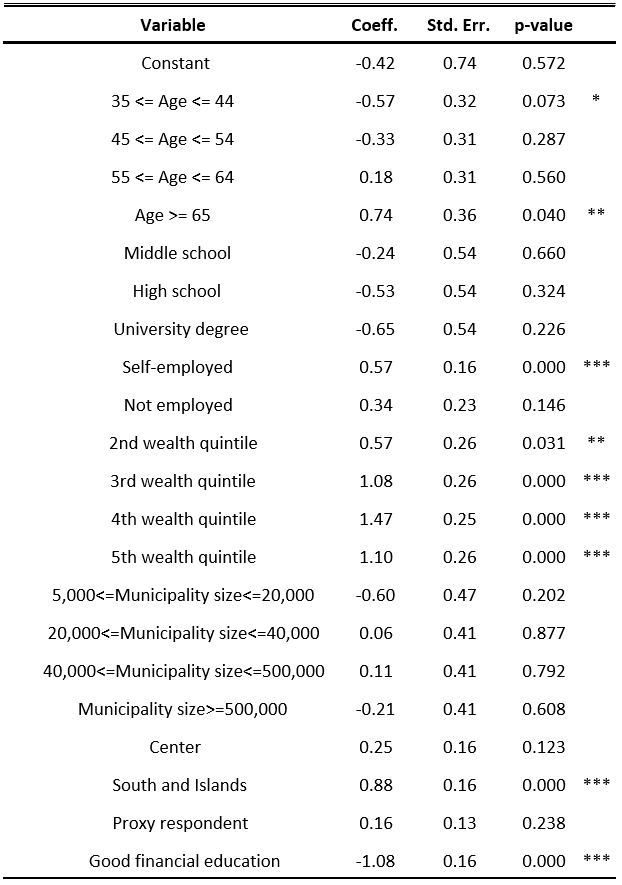References
Ahnert, H., Kavonius, I. K., Honkkila, J., and Sola, P. (2020). Understanding household wealth: linking macro and micro data to produce distributional financial accounts (No. 37). European Central Bank.
Baffigi, A., Cannari, L., and D’Alessio, G. (2016). Cinquant’anni di indagini sui bilanci delle famiglie italiane: storia, metodi, prospettive. Bank of Italy Occasional Paper, No. 368.
Engel, J., Riera, P. G., Grilli, J., and Sola, P. (2022). Developing reconciled quarterly distributional national wealth–insight into inequality and wealth structures.
Gambacorta, R., and Porreca, E. (2022). Bridging techniques in the redesign of the Italian Survey on Household Income and Wealth. Bank of Italy Occasional Paper, No. 719.
Biancotti, C., D’Alessio, G., and Neri, A. (2008). Measurement error in the Bank of Italy’s Survey of Household Income and Wealth. Review of Income and Wealth, 54(3), 466-493.
D’Alessio, G., and Faiella, I. (2002). Non-response behaviour in the Bank of Italy Survey of Household Income and Wealth (No. 462). Bank of Italy, Economic Research and International Relations Area.
ECB (2020). New experimental Distributional Wealth Accounts (DWA) for the household sector. Methodological note.
Neri, A., and Ranalli, M. G. (2012). To misreport or not to report? The measurement of household financial wealth. The Measurement of Household Financial Wealth (July 26, 2012). Bank of Italy Temi di Discussione (Working Paper) No. 870.
Neri, A., Spuri, M. and Vercelli, F. (2024). Distributional Wealth Accounts: methods and preliminary evidence. Bank of Italy Occasional Paper, No. 836.







